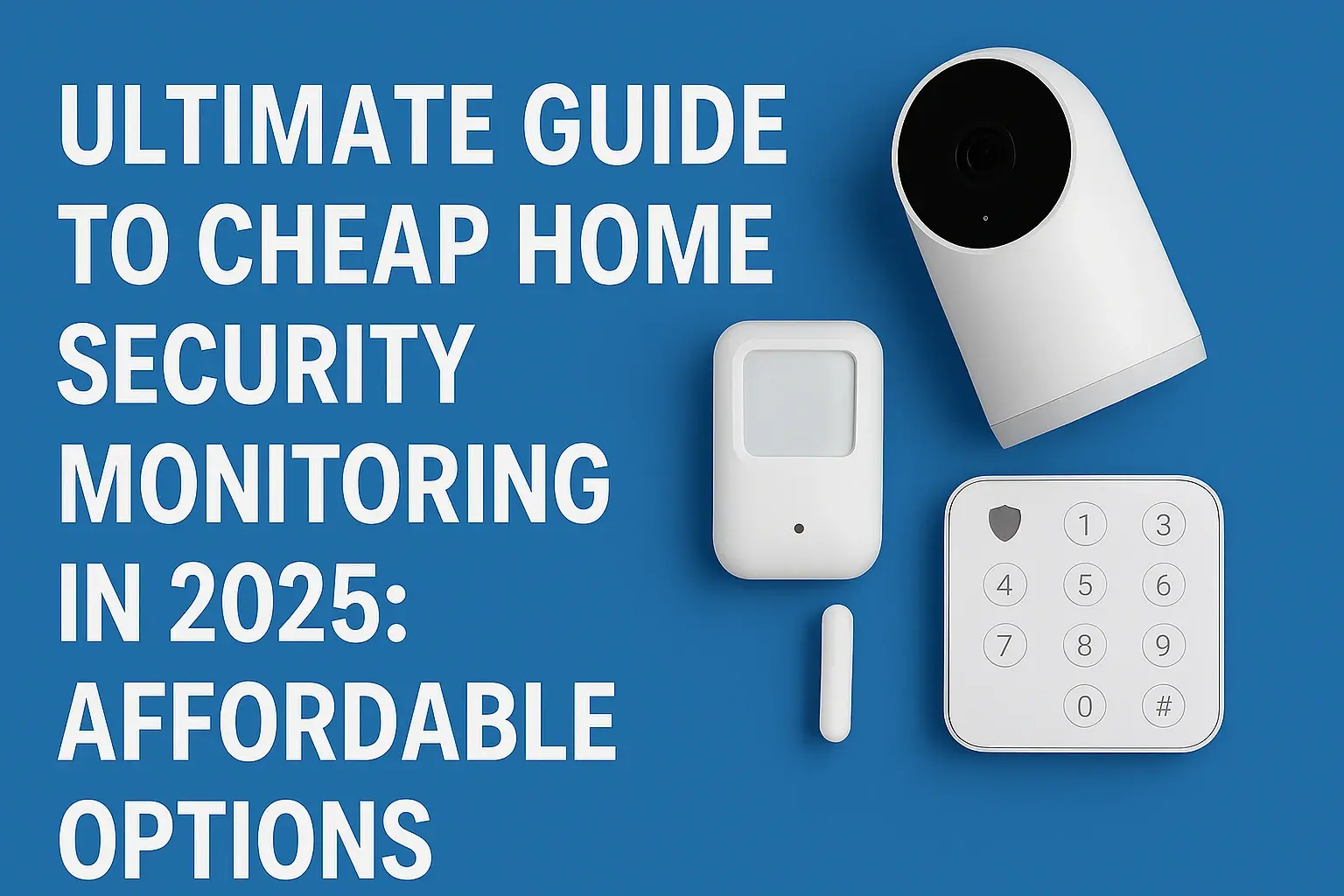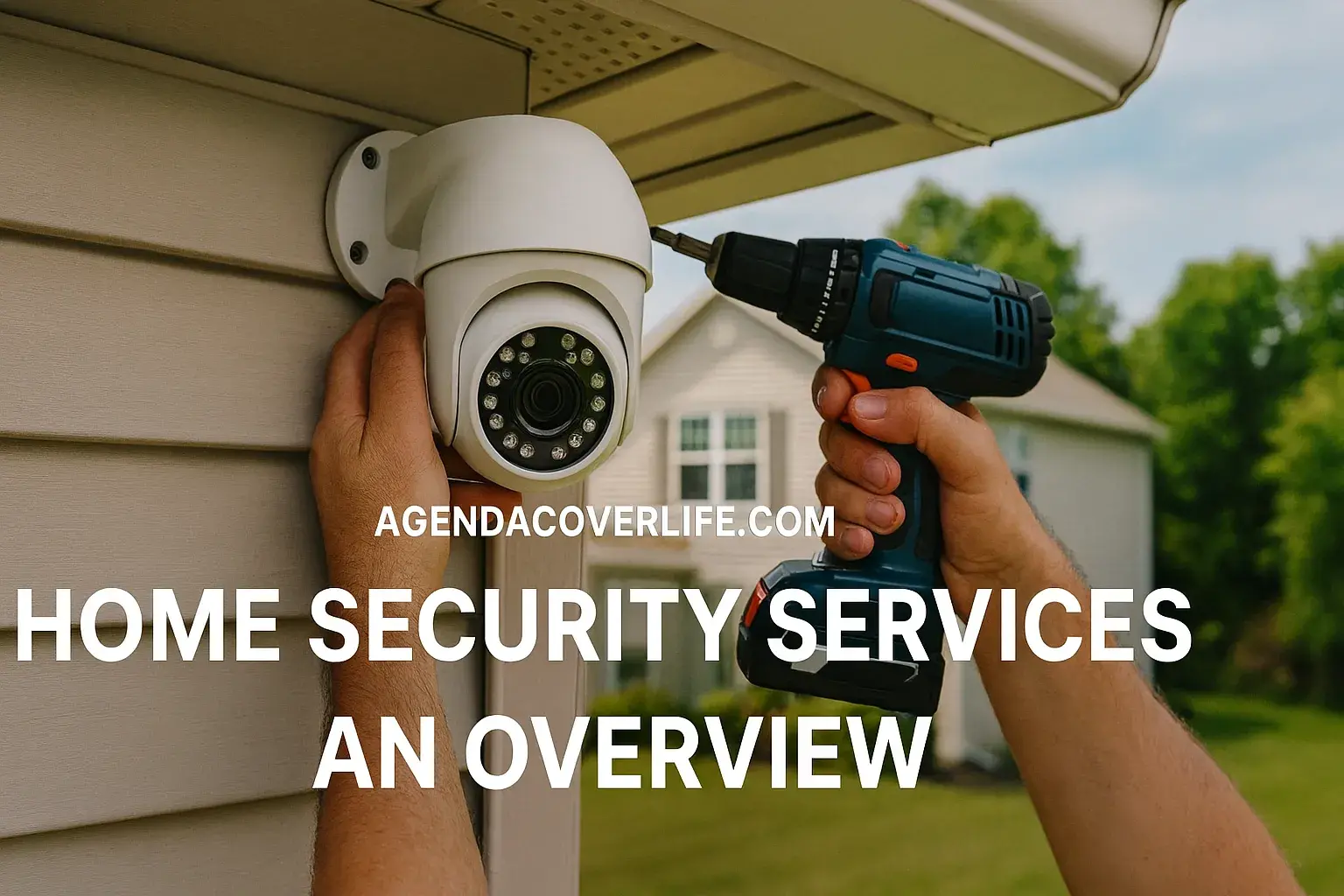In an era where home invasions and property crimes remain a persistent concern, securing your home doesn't have to drain your wallet. Cheap home security monitoring has evolved significantly, offering robust protection through wireless cameras, smart sensors, and app-based alerts, all without the hefty price tags associated with traditional systems. Whether you're a renter on a tight budget or a homeowner looking for cost-effective upgrades, affordable home security systems provide peace of mind through self-monitoring or low-cost professional services. We'll cover what it entails, the top inexpensive options, the debate between DIY and professional installations, practical tips, and more. By the end, you'll be equipped to choose a system that fits your needs and wallet, incorporating semantic elements like "affordable wireless security cameras," "budget DIY home alarms," and "no-contract monitoring plans" to help you navigate this space effectively.
What is Home Security Monitoring and Why Go Cheap?
Home security monitoring refers to the ongoing surveillance of your property using devices like cameras, motion detectors, door sensors, and alarms. These systems can be self-monitored via smartphone apps or professionally monitored by a service that dispatches authorities in case of alerts. Traditional setups often involve expensive contracts and installations, but cheap alternatives leverage smart technology for similar results at a fraction of the cost.
Why opt for cheap home security monitoring? For starters, it's accessible. According to industry experts, effective systems can start under $200, making them ideal for budget-conscious families, young professionals, or those in temporary housing. Affordable options don't skimp on features—many include HD video, night vision, two-way audio, and integration with smart home ecosystems like Amazon Alexa or Google Assistant. Plus, with rising inflation, saving on monthly fees (often $10-30) while maintaining safety is a smart move. Semantic search terms like "low-cost home alarm systems" and "economical property surveillance" highlight how these solutions address common pain points: high upfront costs and ongoing subscriptions.
In 2025, advancements in AI and wireless tech have democratized security. Systems now use cloud storage for footage, AI to distinguish between pets and intruders, and battery backups for reliability during outages. Going cheap means prioritizing value—balancing cost with functionality—without compromising on essentials like real-time notifications and emergency response.
Benefits of Affordable Home Security Monitoring
Choosing budget home security monitoring yields multiple advantages beyond cost savings. First, it enhances deterrence: Visible cameras and signs can reduce burglary risks by up to 300%, per security studies. Affordable systems often include weatherproof outdoor cameras and indoor motion sensors that alert you instantly via app, allowing quick responses.
Second, flexibility is key. No-contract plans let you avoid long-term commitments, perfect for renters or those testing the waters. Many cheap setups offer self-monitoring for free, with optional professional add-ons starting at $10/month. This modularity extends to integration—pair your system with smart lights or locks for automated responses, like lights flashing during an alert.
Third, peace of mind on a dime. Low-cost monitoring covers hazards beyond break-ins, such as fire, flood, or carbon monoxide detection. For families, features like geofencing (auto-arming when you leave) add convenience. Environmentally, wireless systems reduce wiring waste, and their energy-efficient designs keep utility bills low.
Economically, these systems can lower home insurance premiums by 5-20% with proof of installation. Semantic keywords like "inexpensive smart home security" and "cost-effective monitoring services" underscore how affordability aligns with modern lifestyles, where remote work demands constant connectivity.
Top Cheap Home Security Monitoring Systems in 2025
Based on expert reviews and testing, here are the best affordable home security systems. We've focused on those under $300 for starters, with low or no monthly fees, emphasizing DIY ease and features.
1. SimpliSafe: Best Overall Budget Pick
SimpliSafe tops lists for its value-driven approach. Starter kits begin at $239, including a base station, keypad, motion sensor, and entry sensors. Monitoring starts at $15/month for professional services, with self-monitoring free via the app.
Pros: Easy DIY install (under 30 minutes), 24/7 monitoring with live guard options, HD cameras with AI detection, and integrations with Alexa/Google. No contracts, plus a 60-day money-back guarantee.
Cons: Limited third-party smart home compatibility beyond basics; website navigation can be confusing.
Why cheap? Packages scale affordably, and promotions often drop prices further. Ideal for "budget wireless home security systems."
2. Ring Alarm: Best for Smart Home Integration
Ring's 5-piece kit costs $200, featuring sensors, a keypad, and a siren. Self-monitoring is free, while pro monitoring is $10-20/month, including video storage.
Pros: Seamless Amazon ecosystem integration (e.g., with Echo devices), cellular backup, and expandable with affordable cameras ($50+). App alerts are real-time and customizable.
Cons: Alexa-focused, so Google users might feel limited; requires a Wi-Fi extender in larger homes.
Why cheap? Low entry point and optional subscriptions make it perfect for "affordable smart alarm monitoring."
3. Arlo Home Security System: Best for Versatility
At $200, Arlo's kit includes a keypad and all-in-one sensors detecting motion, doors, and more. Monitoring is $25/month, but basics like alerts are free.
Pros: Intuitive app, battery/cellular backup, and broad compatibility (Alexa, Google). Sensors are multi-functional, reducing add-on needs.
Cons: Limited for very large homes; advanced features require subscriptions.
Why cheap? Compact design and no-contract flexibility suit "economical outdoor security monitoring."
4. Abode Iota Security Kit: Best for Expandability
Priced at $300, it includes a base with a camera, sensor, and fob. Monitoring from $18/month, with free self-options.
Pros: Excellent third-party support (Sonos, Philips), easy setup, and optional subs.
Cons: Fewer sensors in base kits; higher starting price.
Why cheap? Broad compatibility minimizes future costs for "budget-friendly home automation security."
5. Cove Security: Best Value Monitoring
Starts at $150 for hub/keypad, with monitoring at $19.99/month. No contracts, DIY install.
Pros: Affordable plans include camera support, cellular backup, and loud sirens. Integrates with Alexa/Google.
Cons: Equipment feels basic; app notifications are text-heavy.
Why cheap? Low monitoring fees for "inexpensive professional home monitoring."
6. Eufy: Best No-Subscription Option
$159.99 kit with local storage, no monthly fees. Features AI detection and HomeKit compatibility.
Pros: Facial recognition, no cloud costs, works with major assistants.
Cons: Limited sensors; no cellular backup.
Why cheap? Zero ongoing fees for "free home security monitoring alternatives."
7. Kangaroo: Best Ultra-Budget Pick
$179 system, with devices from $30. Optional $40/year cloud.
Pros: Standalone Wi-Fi sensors, cheap doorbell add-ons.
Cons: Minimal smart features without subs.
Why cheap? Modular for "low-budget entry-level security systems."
These systems were selected from rigorous tests, scoring high on affordability and reliability.
DIY vs. Professional Home Security Monitoring on a Budget
When budgeting for a home security system, the DIY vs. professional debate is crucial. DIY systems, like those above, involve self-installation via apps and peel-and-stick sensors. Costs? Upfront $150-300, with monitoring $0-25/month. Pros: Affordable, customizable, no install fees (pro installs can add $100+). They're flexible for renters and tech-savvy users, offering semantic matches like "DIY budget home alarms."
Cons: Requires time and basic tech know-how; potential gaps in coverage if setup errors occur. Self-monitoring means you're the first responder, which might not suit everyone.
Professional systems, from companies like ADT or Vivint, include expert installation and monitoring. Budget options like ADT Self Setup start at $195, with $25/month plans. Pros: Reliable setup, 24/7 pro response (faster dispatch with video verification), and comprehensive coverage. Ideal for larger homes or those wanting hands-off security.
Cons: Higher costs—installs $100-500, monitoring $30-60/month. Contracts can lock you in, though no-contract pros exist.
On a budget? DIY wins for most, saving 50-70% upfront. Hybrid options (DIY with optional pro monitoring) bridge the gap, like Ring or SimpliSafe. Consider your home size, tech comfort, and risk level—DIY for small spaces, pro for high-value properties.
Tips for Setting Up Cheap Home Security Monitoring
Maximize your budget with these practical tips:
- Assess Needs First: Map entry points and vulnerabilities. Use free apps for virtual audits. Focus on "affordable entry sensor kits."
- Layer Defenses: Combine cameras, lights, and signs. Fake cameras cost $10-20 but deter effectively.
- Go Wireless: Avoid wiring costs; battery-powered devices last 1-2 years.
- Integrate Smartly: Link to free platforms like IFTTT for automations, e.g., motion lights.
- Monitor Smartly: Opt for self-monitoring to save; add pro only if needed. Use notifications wisely to avoid alert fatigue.
Secure Wi-Fi: Change defaults, use VPNs—cyber threats are real in connected homes.
Test Regularly: Monthly checks ensure functionality; update firmware for security patches.
Budget Add-Ons: Start small, add $50 cameras later. Look for bundles.
Insurance Perks: Notify your provider for discounts; monitored systems qualify best.
Frugal Hacks: Dogs, motion lights ($20), or community watches complement systems.
These tips ensure "cost-effective home protection strategies" work seamlessly.
Additional Budget-Friendly Security Measures
Beyond systems, enhance security cheaply:
- Smart Locks and Doorbells: $100 devices like Wyze offer keyless entry and video.
- Lighting and Timers: LED motion lights ($15) simulate occupancy.
- Window Films and Bars: $20 films obscure views; bars add physical barriers.
- Safe Storage: Affordable safes ($50) protect valuables.
- Community Apps: Nextdoor for neighborhood alerts—free vigilance.
Semantic terms like "thrifty home safety enhancements" tie these to overall monitoring.
FAQs on Cheap Home Security Monitoring
Q: Can I get effective security under $200?
A: Yes, like Ring or Eufy kits.
Q: Is self-monitoring reliable?
A: For proactive users, yes; pros add emergency dispatch.
Q: Do cheap systems work offline?
A: Many have cellular backups.
Q: How to avoid hidden fees?
A: Choose no-contract, read fine print.
Q: Best for apartments?
A: Wireless DIY like SimpliSafe.
Conclusion: Secure Your Home Without Breaking the Bank
Cheap home security monitoring in 2025 proves that quality protection is attainable on any budget. From SimpliSafe's versatile kits to Eufy's no-fee local storage, options abound for "affordable residential surveillance solutions." Whether DIY or pro, prioritize features that match your lifestyle. Implement tips, layer defenses, and enjoy peace of mind. Remember, the best system is one you use consistently—start small, scale as needed.





